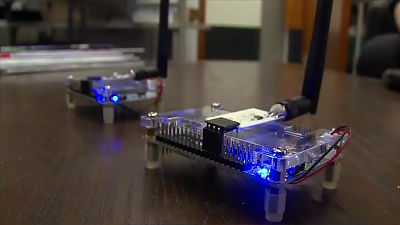Under development of new technology to rotate molecules to produce light, brighter · energy saving & long life display

In collaboration with Cambridge University, East Anglia University and Eastern Finland University, we succeeded in creating light by rotating molecules. Application of this technology makes it possible to make televisions, smartphone displays, room lights etc. brighter, energy saving and longer life.
Rotating molecules create a brighter future | University of Cambridge
http://www.cam.ac.uk/research/news/rotating-molecules-create-a-brighter-future

High-performance light-emitting diodes based on carbene-metal-amides | Science
http://science.sciencemag.org/content/early/2017/03/29/science.aah4345

The technology to create light using moleculesOrganic EL (OLED)It was invented in the 1980s as one of them. Although organic EL is widely used in television and PC displays even in 2017, it has a fundamental problem of poor efficiency of converting electric energy into light.
When power is passed through the material in which molecules are aligned, the whole molecule becomes active, of which 25% produces light and the remaining 75% remains dark. Molecules in this dark state can not convert electrical energy into light and waste energy. The amount of heat generated by the molecules in this state will be larger than the old type incandescent bulb using the filament.
So, so fariridiumApproach was also taken to change the rotation of the molecule using rare metals such as glowing molecules in the dark state. However, this method takes too much time to rotate the molecule, so the organic EL that accumulates energy and is damaged becomes unstable. For this reason, it is considered difficult to put it into practical use.
On the other hand, researchers at the University of East Anglia have developed a new technology to join two organic molecules with copper or gold atoms. The two joined molecules are just like a propeller, and molecules in the dark state twist on the rotating propeller, so that it is possible to immediately change the rotation and convert electric energy into light. At this time, it is possible to realize almost 100% conversion efficiency without damaging the organic EL as in the existing method.

Professor Dan Credgington of the University of Cambridge / Cavendish Laboratory who studied, "It is surprising that this new technology began to defeat the performance of the technology that has been developed for decades at an early stage, If the discovered effect becomes available in the whole spectrum, the way to produce light will change, "commented.
Researchers will continue further research in the future and use the mechanisms discovered this time to say that we will focus on designing new molecules that will eventually not use rare metals at all.
Related Posts:
in Science, Posted by darkhorse_log







